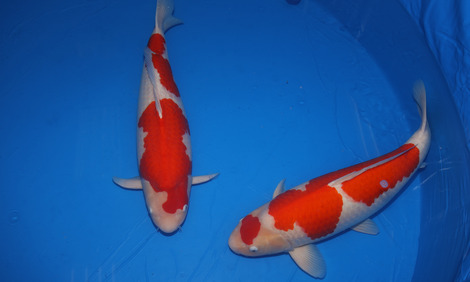If you visit the well-known koi breeders in the mountains of Niigata Prefecture, you will notice how they fly the flags of some famous Japanese food manufacturers on their farms. If you think about how much food a koi farm with 500 natural ponds requires, or like the Marusei koi farm with almost 1000 natural ponds, you’ll soon be asking yourself how they can afford it! The Marusei koi farm, for example, requires about 3000 kg of koi food per month. The food referenced on just one of the prettily coloured flags costs a koi enthusiast around €20 per kg. This results in monthly food costs of €60,000. Assuming Marusei is sponsored so only pays half of this, it would still be €30,000, which makes about €360,000 per year.
Talking to us in a personal context several breeders said that they mostly only feed cheap food for the masses of juvenile fish, and later change over to expensive food for the koi they select from a size of about 20-30 cm upwards! Should you ever visit the breeders, take a look behind the buildings. There you will see the empty food sacks and you will quickly see how much "expensive" food and how much "cheap" food is really being fed! Who’d have thought it!
